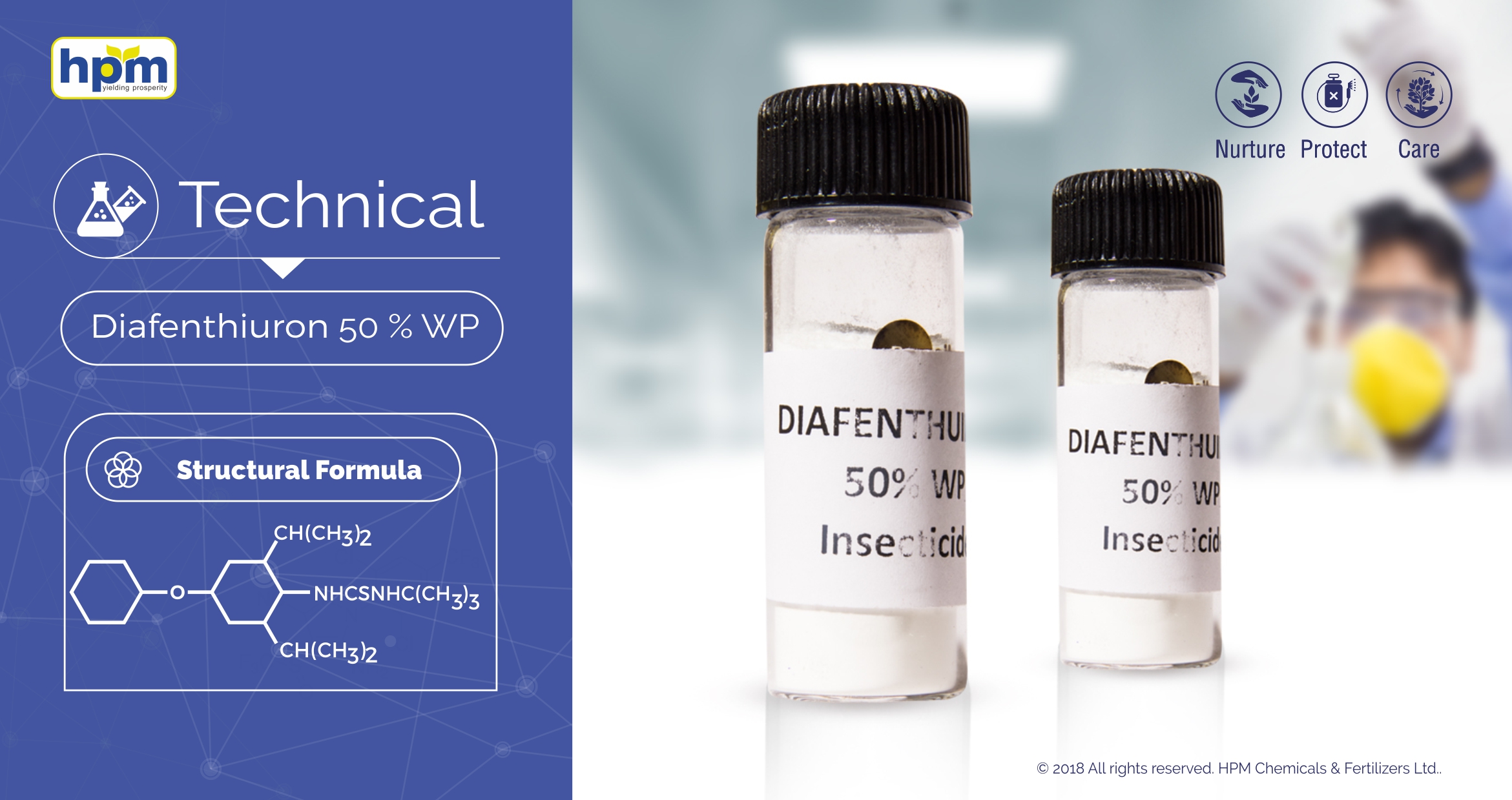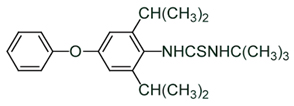- HOME
- ABOUT
- INFRA
- BUSINESS AREA
- KNOWLEDGE
- CSR
- Policy & Committe
- Activities
- Plantation Drive(Samba)
- Green Nation Clean Nation Plantation Drive
- Santosh Krishi Diwas
- 14 TH SENIOR ROLL BALL NATIONAL CHAMPIONSHIP
- Arm Wrestling Championship
- Clothes Distribution for Students
- Samuhik Vivah Bhiwadi
- Help him to Breathe
- WHEELCHAIR DISTRIBUTION KHUSHKHERA
- Girl's Adoption CSR
- Save Eyes Save Life
- CAREERS & HR
- NEWS
- CONTACT
- BLOG
QUESTIONS? CALL: 011-4507 1800

Stands for delivering best service and exceptional quality for crop protection.
Tel. (911) 45071800-899
Email: info@hpmindia.com
HPM Chemicals & Fertilizers Ltd.
209-210, Anupam Bhawan, Azadpur Commercial Complex Azadpur, Delhi-110033
EAGLE (Diafenthiuron 50%WP)
- Difenthiuron 50% WP is a broad Spectrum insecticide.
- It paralyses the pest, which remain immobile on the crop until death in about 3-4 days.
- Insecticide and acaricide which kills larva, nymph and adult by contact and stomach action.
- It has Vapour phase.
- It is Translaminar
- It controls pests on lowerleaf side also
- Unique: no cross resistance
- Immediately after feeding reproduction stop


| Product Name |
: |
Diafenthiuron | |||||
| Type of pesticide |
: |
Insecticide, acaricide | |||||
| Chemical name |
: |
N-[2,6-bis(1-methylethyl)-4-phenoxyphenyl]-N´-(1,1-dimethylethyl)thiourea | |||||
| Empirical Formula |
: |
C23H32N2OS |
|||||
| CAS No. |
: |
[80060-09-9] | |||||
| UN No |
: |
3077 | |||||
| Packing group |
: |
III | |||||
| IMDG |
: |
Class 9[Environmentally hazardous Substance, solid, N.O.S (Diafenthiuron)] | |||||
| Shelf-life |
: |
Two years under normal storage conditions. | |||||
|
DESCRIPTION |
|||||||
| Diafenthiuron is a pro-insecticide, which has first to be converted to its active form. The activecompound then acts on a specific part of the energy-producing enzymes in the mitochondria. This results in immediate paralysis of the pest after intake or contact with the product. | |||||||
| Mode of action | |||||||
| Insecticide and acaricide which kills larvae, nymph and adult by contact and/or stomach action; also shows some ovicidal action. | |||||||
| Applications It is a broad Spectrum insecticide. It is effective against phytophagous mites. It controls pests on lower-leaf. Reproduction stops immediately after feeding. | |||||||
| Structure Formula |
: |

|
|||||
| Physical Properties | |||||||
| Appearance |
: |
White to yellowish-brown powder | |||||
| Diafenthiuron content, percent by mass |
|
96.0% Min. | |||||
| Acidity (as H2SO4), percent by mass |
: |
1.0% Max. | |||||
| Moisture Content, percent by mass |
: |
0.2% Max. | |||||
| TOXICITY DATA | |||||||
| Mammalian Toxicity |
: |
WHO (a.i.) U; Unlikely to present acute hazard | |||||
| Environmental Toxicity |
: |
Moderately toxic to birds. Highly toxic to fish and it is highly toxic to aquatic invertebrates Daphnia,magna as well. It is toxic to bees. | |||||
| Formulation |
: |
50% WP | |||||
| Trade name |
: |
RISE | |||||
| Packing detail |
: |
250g | |||||
| Recommendations | |||||||
| Crop | Common name of the Pest | Dosage/acre(gm) | Dilution in Water (Liter) |
Waiting Period
(days |
|||
|
Cotton
|
Whiteflies, Aphids, Thrips, Jassids | 240 | 200-400 | 21 | |||
|
Cabbage
|
Diamond Back Moth (plutella xylostella) | 240 | 200-300 | 7 | |||
|
Chilli
|
Mites | 240 | 200-300 | 3 | |||
|
Brinjal
|
Whitefly | 240 | 200-300 | 3 | |||
|
Cardamom
|
Thrips, Capsule borer | 320 | 400 | 7 | |||
|
Citrus
|
Mites | 2.0g/L | 800 ml-1200 ml/acre | 30 | |||
| Name | Details |
|---|---|
| UID | HPM2000K081 |
| Brand Name | Eagle |
| Technical Name | Diafenthiuron 50% WP |
| Packing Details | 1 Kg, 500 gm, 250 gm. |
| Registration No | CIR-121609/2015-Diafenthiuron(WP)(352)-114 |
| Production Plant | HPM Keshwana |
| Toxicity Symbol |  |
| Manufactured By | HPM Chemicals and Fertilizers Ltd. |







